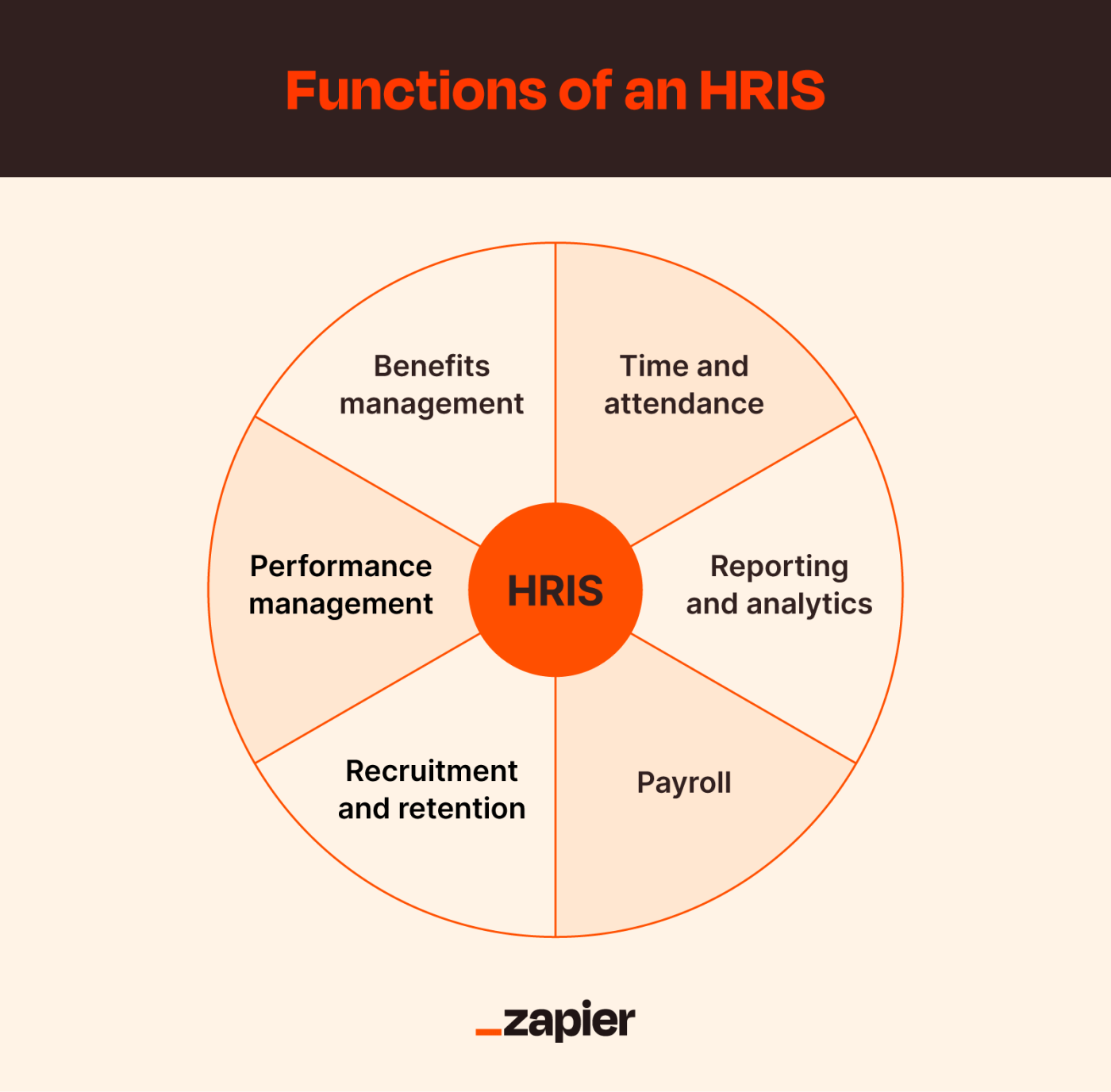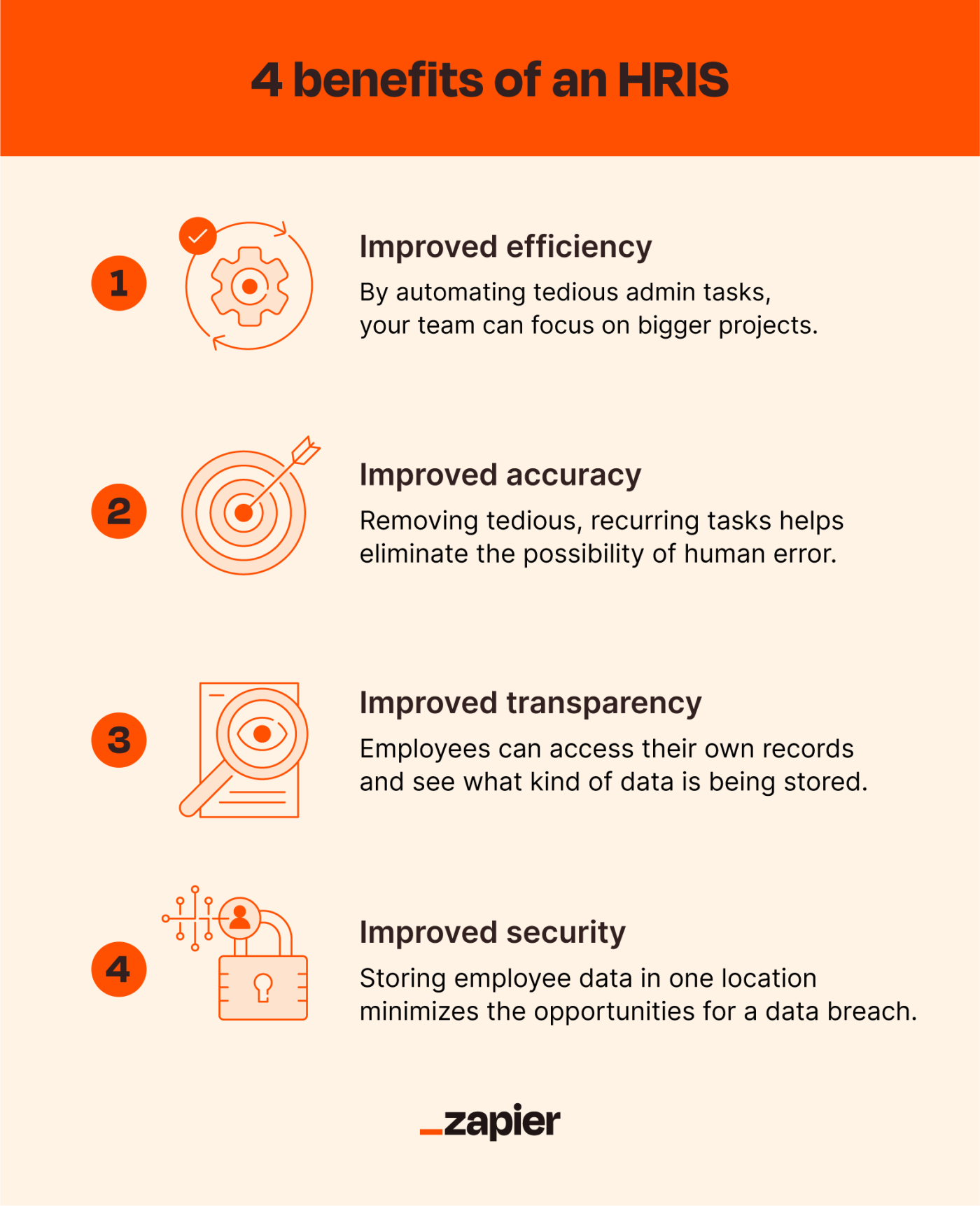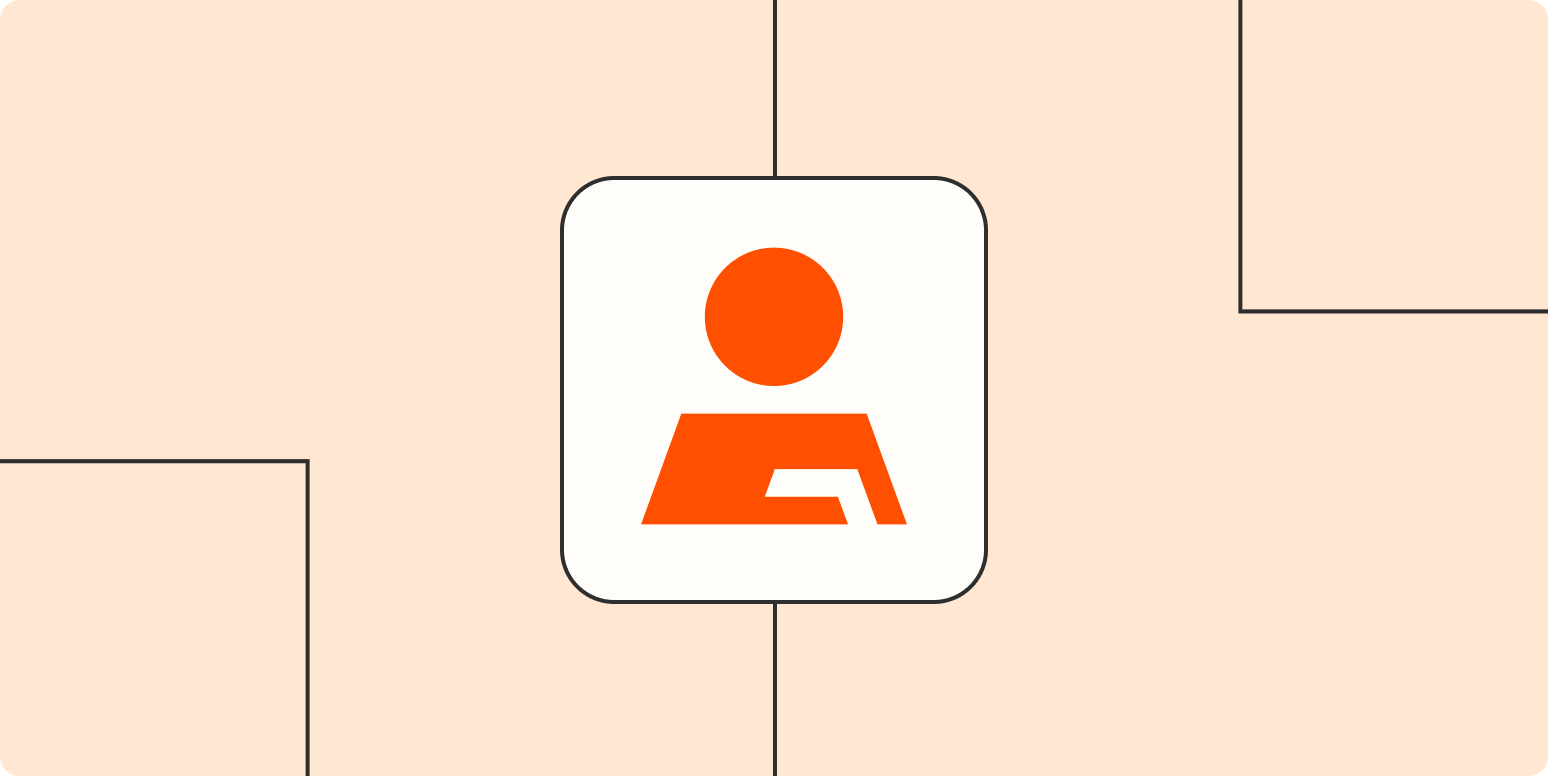My first full-time job was at a very, very small company—we’re talking one room, five people kind of small. I got my paychecks handed to me physically at my desk every other week—and that was the extent of our HR management.
When I went to work at a company that used an HR management platform, I was totally blown away. Paycheck records, time-off tracking, performance reviews, and FSA reimbursements, all in one platform? And it came with a perks program? What was, I realize now, a pretty standard HR platform felt like the height of luxury to me.
Automate employee onboarding and offboarding
Now I would be miserable if I went to work at a company that didn’t use an HRIS, or human resource information system. Not only does an HRIS make it easier for the HR department to manage all of the company’s employee data, but it also makes individual employees’ lives easier by introducing convenience to what can otherwise be pretty frustrating processes.
What is an HRIS?
A human resource information system (HRIS) is a computer system used to store and track employee data ranging from attendance and payroll to manager evaluations and incident records. A good HRIS will automate all of the tasks that aren’t necessary to do by hand—things like calculating and withholding taxes, tracking time-off balances, and notifying employees and managers of updates and necessary actions.

What does an HRIS platform do?
Each HRIS has different features, but most have some key tools in common. On the admin side, a good HR information system will have:
-
An employee contact manager
-
Payroll processing
-
Time-off tracking (some have general time tracking as well)
-
Benefits management
-
Employee performance review management and training
-
Legal compliance management
-
Recruitment and onboarding tools
On the employee side, a quality HRIS will provide:
Some HRIS platforms also offer extras like automatic charitable deductions, built-in savings tools, and discount programs.
HRIS vs. HRMS vs. HCM
HRIS is often confused with two similar terms: HRMS (human resources management system) and HCM (human capital management). While HRIS, HRMS, and HCM systems all have similar features, they are slightly different. Specifically:
-
An HRIS focuses on storing and managing employee data.
-
An HRMS focuses on managing the recruitment process.
-
An HCM system focuses on managing the entire employee life cycle from recruitment to retirement.
Benefits of a human resource information system
Anyone who’s ever tried to do anything related to insurance or taxes by hand should understand the benefits that an HRIS offers to both employees and administrators. The #1 benefit, frankly, is that it keeps employees happy. But besides that, HRISes also offer:
-
Improved efficiency: Since an HRIS automates so many HR admin tasks, it frees up a huge amount of time and gets what would be very annoying and tedious tasks done in the easiest way possible.
-
Improved accuracy: As in any situation, automation prevents mistakes by eliminating the possibility for human error.
-
Increased transparency: HRIS systems can make it easier for employees to access their own records and see what information is being stored about them.
-
Increased security: Keeping all employee data in one central location minimizes the opportunities for a security breach and keeps personal information safe.

HRIS software options
There are a number of HRIS software options available on the market. Some of the most popular are:
-
BambooHR
-
ADP Workforce Now
-
Gusto
-
Access PeopleHR
-
Zenefits
Whether you use an entirely self-contained HRIS or you link your HR platform to another payroll, performance management, or benefits administration system, automation workflows are a major benefit of an HRIS.
The software itself will automate a lot of your processes, like delivering employee paperwork, generating payroll reports, and scheduling deadline and event reminders. Then, an automation tool like Zapier can handle the essential task of being sure that the information in your HRIS is synced with all the other apps your business uses. Learn more about human resources automation, so you can focus on the human side of the equation.
If you’re tired of relying on manila folders and clunky spreadsheets to keep your HR data organized, HRIS can be an effective solution. Not only will an HRIS save your team valuable time on tedious tasks, but it will also supply invaluable information for your company’s decision-makers.
[adsanity_group align=’alignnone’ num_ads=1 num_columns=1 group_ids=’15192′]
Need Any Technology Assistance? Call Pursho @ 0731-6725516







